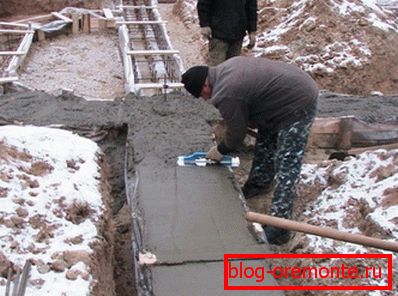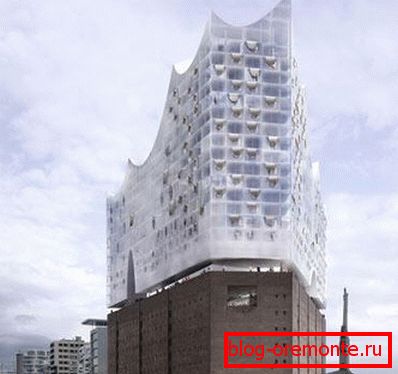Concrete strength: defining characteristics of a material,
The average strength of concrete is its most important characteristic. Most successfully, it can resist compression. Based on this, most structures are designed to absorb compressive loads. Only sometimes in the construction of concrete structures is taken into account and their strength in tension or bending.

Characteristics of the material at different types of loads
Compressive strength characterizes the class or brand of concrete. They are determined after the regulatory strength of the material, which occurs after 28 days.
Compressive strength

Based on the temporary period of loading the structure, this quality of the mixture can be calculated at another age. For example, often there is a need to know the strength of concrete after 7 days, 18, 60, 180, etc.
Note! In this regard, there is such a thing as the stripping strength of concrete. It implies such a hardness at which products can be removed from molds without damage and safely transported inside the plant for storage.
To save cement consumption, the value of the tensile strength of the prepared material should not be higher than its strength by brand / class, more than 15 percent.
- Class - это гарантированная в 95 случаях из 100 прочность смеси в Мпа. Он имеет значения от Вb-1 до Вb-80.
- Brand - is the average strength of the solution, measured in kgf / cm? or mpa? Heavy (general construction) concretes have brands from Mb-50 to Mb-800. The strength of aerated concrete or other lightweight material can be up to Mb-50.
- There are dependencies between the class of the material and its average strength (with the coefficient of variation of strength n = 0.135, as well as the ratio of guaranteed security t = 0.95): B = R • 778 and R = B: 0.778.
- When designing responsible structures, specialists, as a rule, designate a mixture class, in all other cases a brand.

Tensile strength
This material characteristic is taken into account when creating structures in which cracking is unacceptable: tanks for technical liquids and water, hydraulic structures, etc.
| Classификация бетона по прочности при растяжении | |
| Class | Brand |
| Bt-0.8 | Pt-10 |
| Bt-1.2 | Pt-15 |
| Bt-1.6 | Pt-20 |
| Bt-2 | Pt-25 |
| Bt-2.4 | Pt-30 |
| Bt-2.8 | Pt-35 |
| Bt-3.2 | Pt-40 |
Tensile strength при изгибании
When laying pavements and airfield take-off strips, designers designate grades or grades of the solution for stretching during bending.
| Classификация раствора по прочности на растяжение при изгибании | |
| Class | Brand |
| Bbt-0.4 | Рbt-5 |
| Bbt-0.8 | Рbt-10 |
| Bit -1.6 | Рbt-15 |
| Bbt-2 | Рbt-20 |
| Bbt-2.4 | Рbt-25 |
| Bbt-2., 8 | Рbt-30 |
| Bbt-3.2 | Рbt-35 |
| Bbt-3.6 | Рbt-40 |
| Bbt-4 | Рbt-45 |
| MB-4.4 | Рbt-50 |
| Bbt-4.8 | Рbt-55 |
| Bbt-5.2 | Рbt-60 |
| Bbt-5.6 | Рbt-65 |
| Bbt-6 | Рbt-70 |
| Bbt-6.4 | Рbt-75 |
| Bbt-6.8 | Рbt-80 |
| Bbt-7.2 | Рbt-85 |
| Bbt-7.6 | Рbt-90 |
| Bbt-8 | Рbt-100 |
Factors that affect material properties
- The instruction warns that there is a linear relationship between the strength of the mixture and the activity of the binder: R = f • (R • C). Solutions with greater strength are prepared on cement with increased activity.
- With an increase in the proportion of cement material strength will increase to certain pores.. Further, it increases not much, and other qualities of concrete deteriorate. For example, creep and sediment increase. Proceeding from this, it is undesirable that there is more than 600 kg of binder in 1 cubes of the mixture.
- The strength of the material is very dependent on the water-cement ratio of the mixture.. The smaller the V / C, the higher this indicator, and vice versa. This circumstance is determined by the physico-chemical component of creating the structure of the material.
Note! When curing ordinary concrete with a binder, it reacts to 15/25 percent of water. To mix a workable solution, you need 40/70% of the liquid (i.e. B / C is 0.4 / 0.7). In this case, an excess of water creates many pores in the material, reducing its strength.

- Illiterately selected fractionality of large fillers, the use of their small grains, the presence of clays, dust, organic impurities - all this lowers the strength of the material mixed with their own hands.
- The strength of the material prepared in compulsory-type mixing units (turbo-mixers and vibratory mixers) is higher than analogs implicated in gravitational types of devices by about 20/30 percent.
- Compaction of the mixture using special equipment increases its strength. Increasing the density of concrete by 1% can increase its strength by 3/5 percent.
- At optimum temperature conditions, the strength of the material will increase for a long time.. This process describes a logarithmic relationship: Rn = R28 • lgn: lg28. Here Rn and R28 indicate the limiting strengths of the mixture after n and 28 days (in MPa), and lgn and lg28 are the logarithms (decimal) of the material's age.
Note! This formula is averaged. With its help, acceptable results are achieved for mixtures on medium-aluminate types of cement, which harden at temperatures of 15/20 ° at the age of 3/300 days. In reality, the strength of the material on different types of cement grows in different ways.
- The temporary increase in the strength of the solution depends on the material and mineral components of the binder.. As the hardening intensity cements are divided into 4 types.
| Type of binder | The physical and mineral composition of Portland cement | K = (Rt. 90): Rt28 | K = (Rt • 180): Rt28 |
| 1 | aluminate (C3A = 12 percent) | 1/0.5 | 1/1.1 |
| 2 | alite (C3S less than 50 percent, C3A about 8 percent) | 1.05/1.2 | 1.1/1.3 |
| 3 | Portland cement of complex composition (pozzolanic analogue containing 14% C3A clinker and Portland cement slag. 30/40% slag) | 1.2/1.5 | 1.3/1.8 |
| 4 | belite portland cement and slag portland cement containing slag more than 50 percent | 1.6/1.7 | 1.55 |
The time of hardening of the solution is strongly influenced by the temperature of the medium and its humidity. The optimum temperature is 15/20 degrees and the relative humidity of 90%.
At negative temperatures, the hardening of the usual mixture almost stops. You can lower the water freezing threshold by adding antifreeze additives to the solution.

With winter work is associated with such a thing as the critical strength of concrete. It means the minimum value of a given value required for the safe freezing of the mixture and its subsequent thawing without destroying the structure of the material.
The table below shows the minimum level of material strength before it is frozen.
| Brand mix | Solution strength at freezing, not less | |
| percent from R28 | kgf per cm2 | |
| M-100M-150 M-200 M-300 M-400 M-500 | 5050 40 40 30 30 | 5075 80 120 120 150 |
Monitoring properties and product testing
To determine the described characteristic of the material produced, specialists in factory laboratories use a concrete strength meter. These devices work according to different principles, which are divided into non-destructive and destructive.
Such methods of testing are known.

- Non-destructive indirect methods using the shock pulse method, as well as a pulsed ultrasonic analogue.
- Non-destructive direct methods only partially break the sample material. This may be the principle of tearing off with chipping or the method of cleaving the angle. At the same time, force meters are used.
- Destructive methods are divided into the inspection of concrete cubes (according to State Standard No. 10108) and the destruction of cores removed from structures (according to State Standard No. 28570). At the same time various hydraulic presses are used.
Sample Form
In the course of material testing, experts identify such categories based on the shape of the samples.
- The cubic strength of concrete is the resistance (temporary) to the contraction of concrete cubes having dimensions of 20 × 20 × 20 cm.
- Prismatic strength is the limit of resistance to compression of concrete prisms with dimensions of 15? 15? 60 cm or 20? 20?

Note! According to SNiP №52 / 01/2003, the strength of the solution under compression is equal to the value of its cubic strength with a security of 95%. In other words, regulatory documents define this parameter as the main mechanical property of concrete.
The prism value shows better the resistance of the material to compression (beams, columns, etc., in shape are more like a prism than a cube). However, the prism test is an expensive and time consuming process. The price of the test cubes is less, and the process is simpler.
Strong blends of the latest generation

Usually, its brand M500 is used as durable concrete, but demand also exists for analogs, up to M-1000. Moreover, modern construction technologies are in dire need of even higher quality materials.
As a result, specialists have developed a super-strong concrete of the new generation of the brand M-1500. For its mixing required 1.5 / 2 times less binder than traditional technology.
The characteristics of the materials will be equal. Such high-strength concrete can be produced in a conventional plant.
Conclusion

The prismatic strength of concrete or cubic are its main characteristic. They determine the durability of the erected structure and the success of its resistance to various loads.
Watch the video in this article, it contains a lot of useful information.